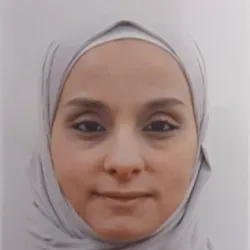Dr Ala Barhoum
Content navigation
About
PhD (Nuclear Medical Imaging), MEng (Computer Engineering), BEng (Biomedical Engineering).
I am currently a lecturer at ANU CPAS, with a focus on responsible innovation. Previously, I worked as a researcher and a casual academic tutoring Signal Processing course at UNSW-Australia.
I hold a master's degree in electrical and control engineering and a bachelor's degree in biomedical engineering.
During my B.Sc. degree, I was directly involved in designing PIC microcontroller-Based RF Wireless ECG Monitoring System. This designed system represents a radio-telemetry system that allows ECG signal transmission from a patient detection circuit via an RF data link. A PIC microcontroller-based monitoring system was designed and implemented for measuring ECG-derived respiration.
As for my research interests, during my graduate studies, I worked on investigating the high-frequency band of heart rate variability for identifying preeclamptic pregnancy from normal pregnancy in Oman. Different algorithmic programs were used to examine whether patients with preeclamptic pregnancy have a reduction in the power of the HF band of HRV compared with participants with normal pregnancies. In addition, I worked closely with a group of biomedical engineers with research interests in detecting and identifying obstructive sleep apnea.
A cochlear implant on live surgeries was one of my most fabulous experiences as marketing manager and application engineer for CPAP and Bipap systems, patient monitors, and sleep lab systems.
My PhD research offers the initial investigation for a revolutionary multi-pinhole design augmented with Laue lens addressing for an ultrahigh-resolution Lens-Based SPECT system. The study's primary contribution is identifying the Laue lens parameters customized for medical imaging applications and, more specifically, for our novel Lens-Based SPECT system.
A first-of-its-feature tracking Monte Carlo simulation environment in MATLAB. The suggested system comprises an array of diffraction lenses positioned at the centres of the pinholes on a SPECT collimator.
I contributed to extending GEANT4 functionality by developing a GEANT4-based detector simulation as an advanced example for the Laue lens as a first attempt. The developed example presents the first attempt to model X-ray and gamma-ray focusing based on Laue diffraction in the GEANT4 toolkit using an advanced example in its early conception. I designed a foundation and implemented the first set of Monte Carlo in GEANT4 for the gamma diffraction example.

